Last Updated on May 21, 2021
After two days of walking around Gwalior, we found nothing. Yes, we finally found the oldest existing zero inscription in Chaturbhuj temple, Gwalior!
Finding the oldest existing zero inscription
The magnificent Gwalior Fort is everything a history (and travel) buff would love to see. But that there is also a mathematical context to this imposing structure is a detail that is often overlooked.
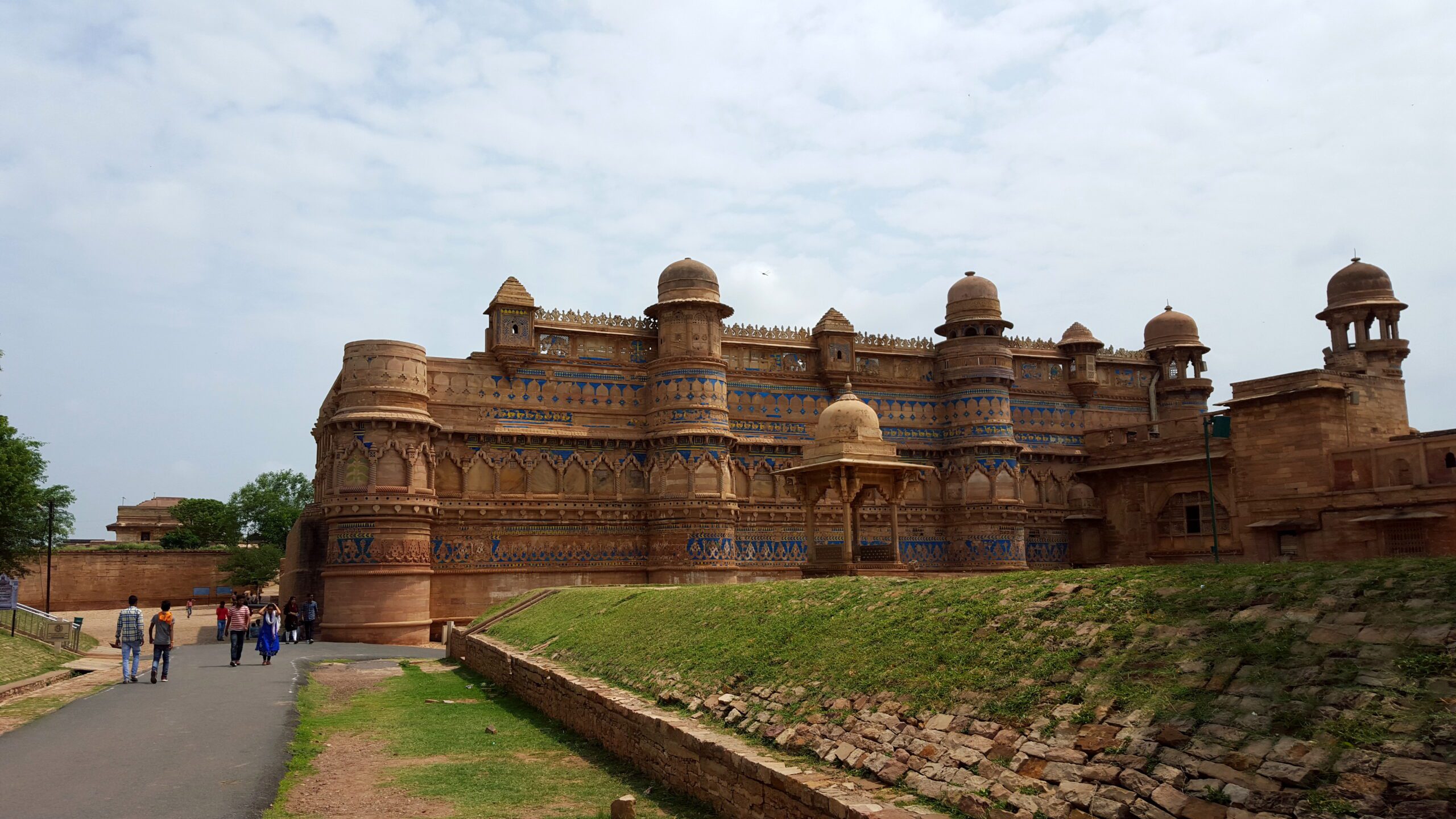
Chaturbhuj temple
Tucked in the folds of the rocky hillside on which the fort stands there is a little temple that is dedicated to Lord Vishnu. The Chaturbhuj temple stands on the climb from the eastern side, from Man Mandir palace down below to the Hathi Pol that opens up into the historical dreamland of Gwalior Fort.
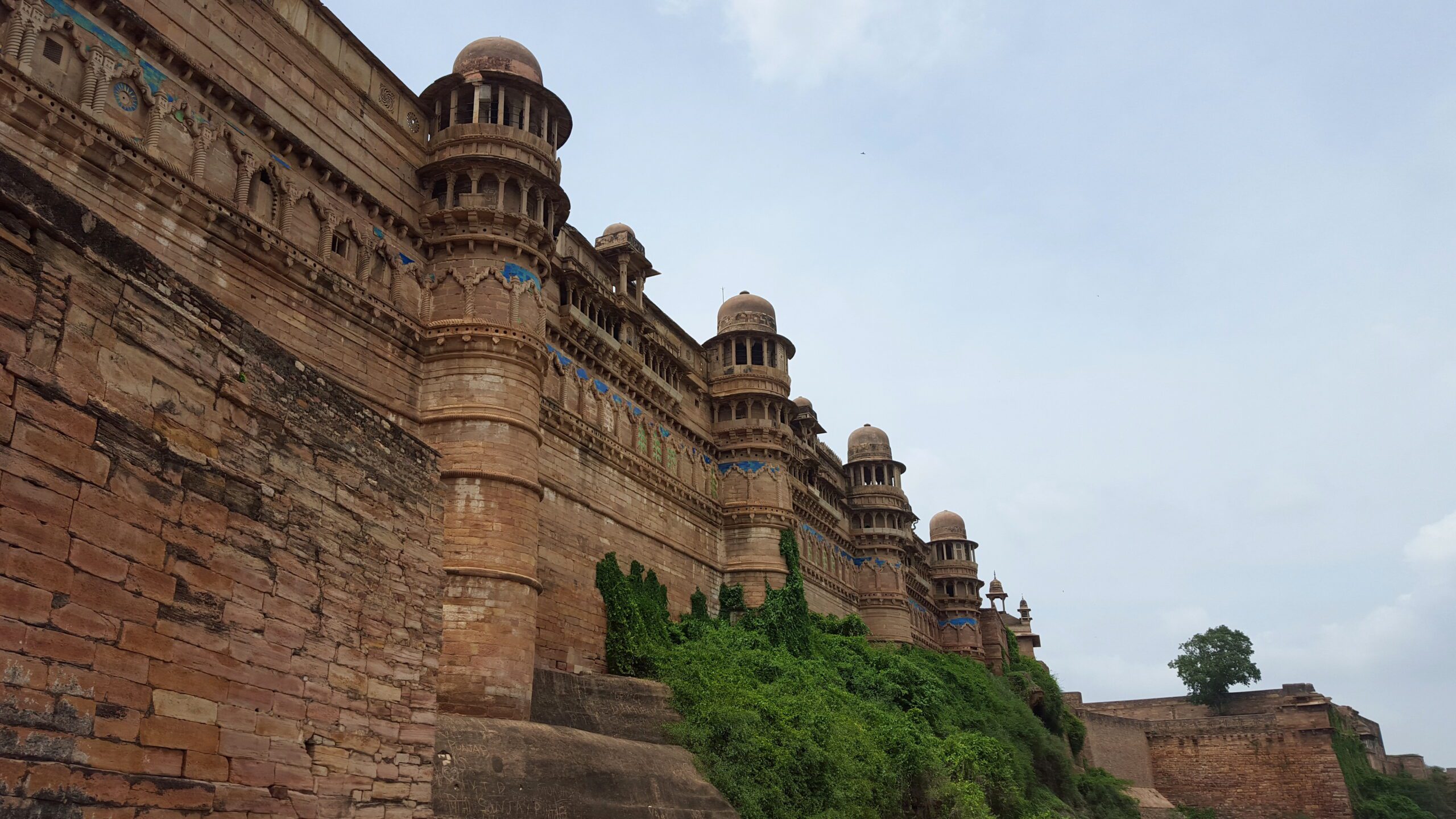
Built in 875 AD, the idol, a monolith hewn from the hill’s rocky face, shows Lord Vishnu with four hands (hence the name Chaturbhuj). Of course, the face of the idol today stands defaced but to the right, there is something interesting.
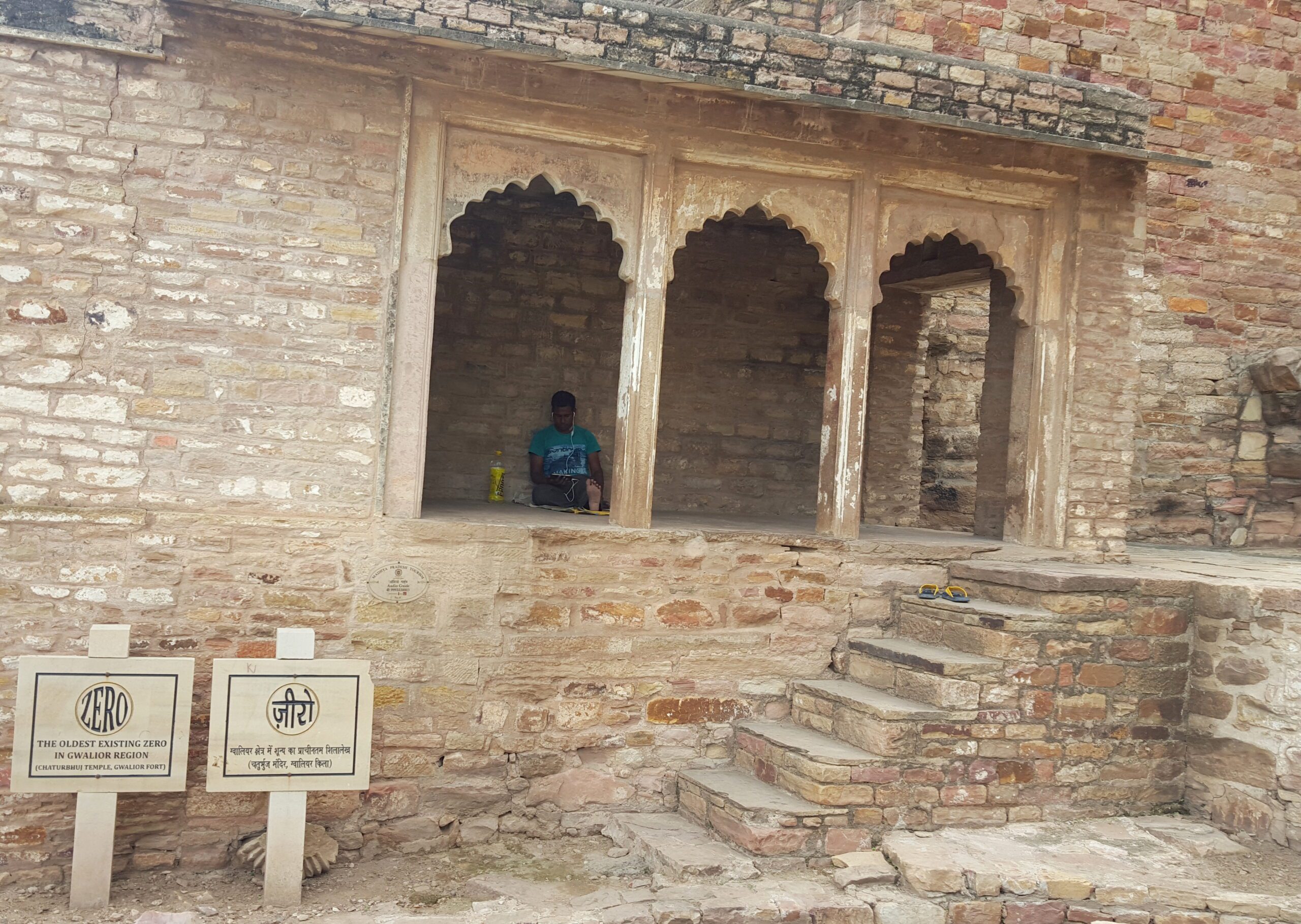
The temple’s keeper was a young lad who we found resting in the shade of an adjacent alcove. There was no one else around on the entire snaking stretch from Man Mandir to Hathi Pol – after all, it was a hot and dreary day in Gwalior.
The few visitors who brave the heat make do with the main fort and the palaces. Lack of publicity for the oldest existing inscription of Zero at the temple and a case of tourist indifference means such little-known gems get overlooked for the more mainstream sightseeing points.
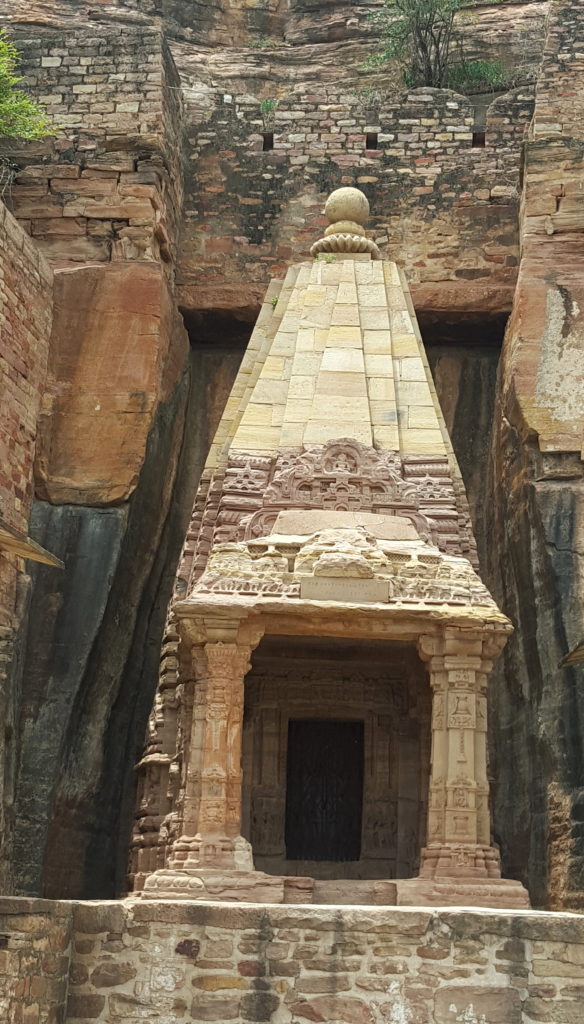
And the zero inscription
Which may explain the readiness of the lad at the temple to open the padlocked gate to the sanctum sanctorum and show us around. But what surprised us – pleasantly, of course – was his taking the initiative to whip out his cell phone, activate the torch in it and flash it at a paragraph of cryptic characters on the stone wall.
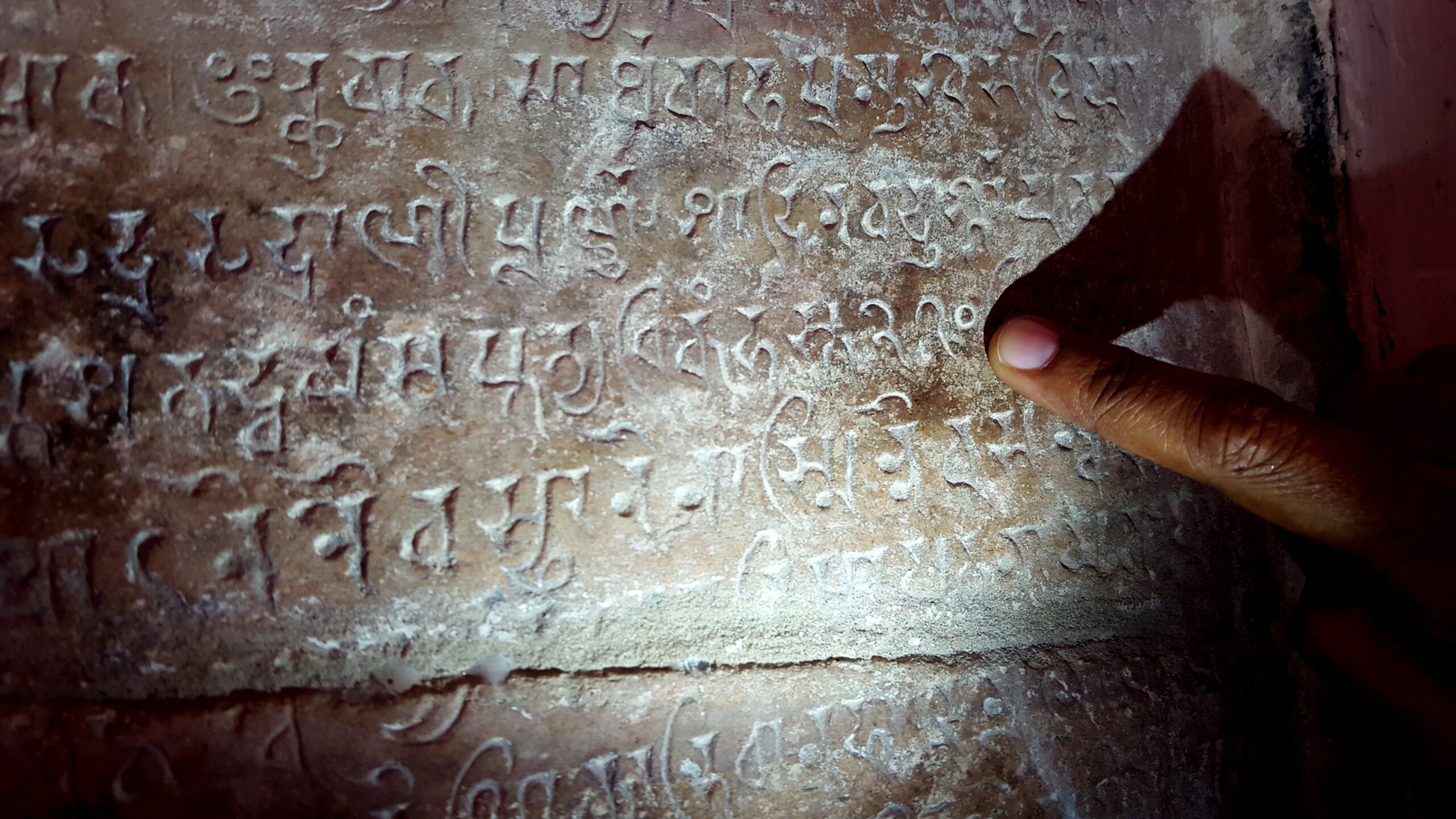
There, nestled in a row of heavily etched lettering, was something that you would miss out on but for a helpful light source and an expert eye.
It was a character like none that you would see in a Sanskrit inscription but quite commonplace today – the Zero! Now, why would a zero get inserted into a message on a wall of a temple built in Gwalior in 9th century AD?

The land on which the Chaturbhuj stands today was, apparently, an endowment to build a temple to Lord Vishnu. 270 hastas (a unit for measuring land in those days) was sanctioned and a further grant of 50 garlands using flowers from the garden was approved. It is this decree that is captured on the wall.
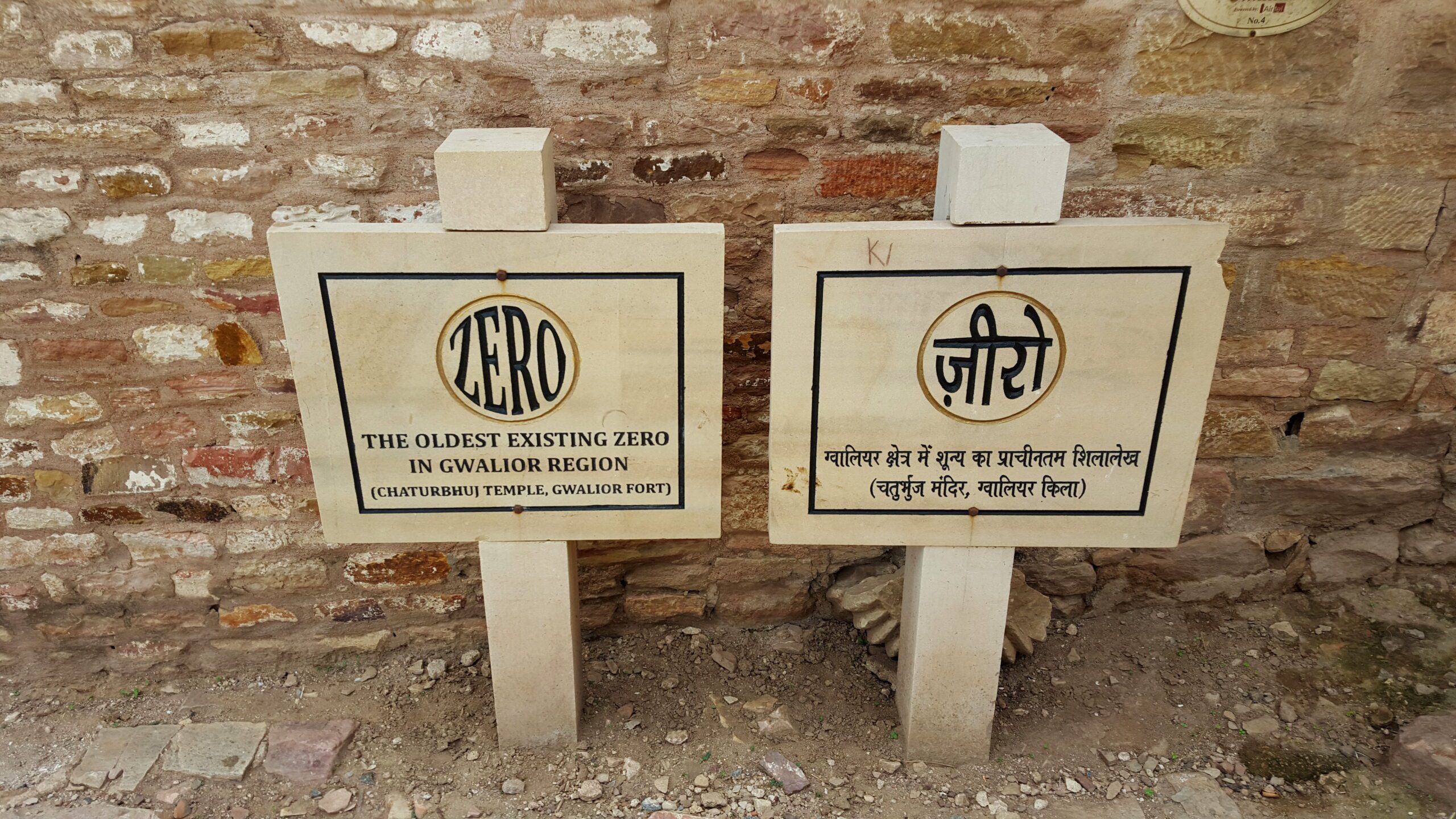
Interestingly, the “0”s in 270 and 50 have been represented by the zeroes as we know them numerically today!
This discovery of the oldest existing zero inscription, the earliest written form of the concept of nothingness had pride of place in this Gwalior temple until 1931. A similar find in a pre-Angkorian temple called Sambor in Cambodia predates the Chaturbhuj zero by almost two centuries.
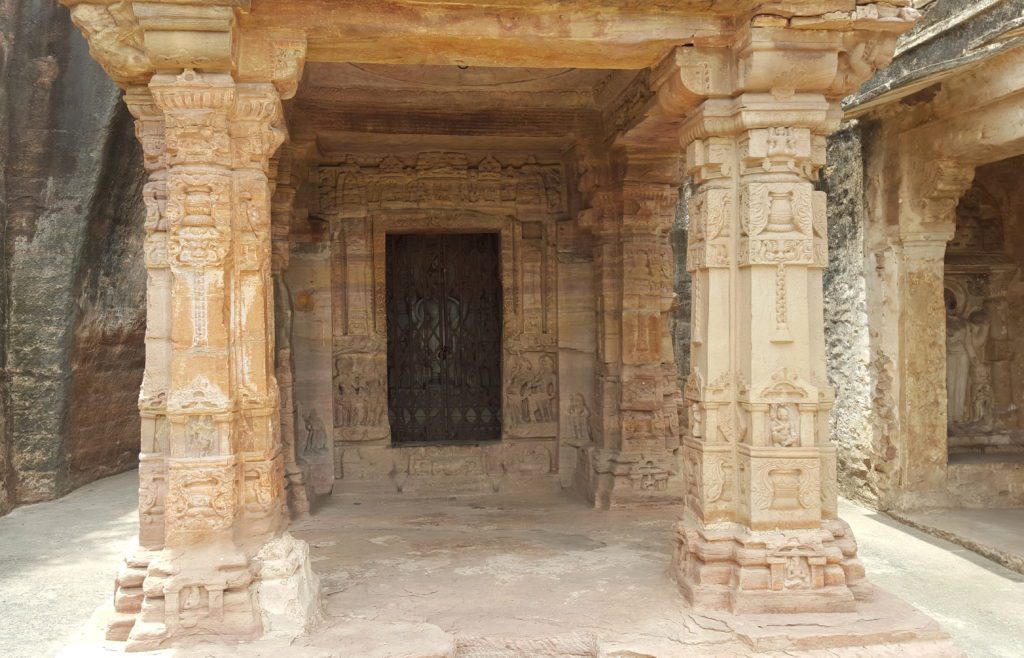
But surely, if you are visiting Gwalior, do check out the impressive fort. And remember also to stroll down the Hathi Pol and stop at the Chaturbhuj temple. There will be someone there eager to throw some light (pun intended!) on what was once the oldest existing zero inscription.




